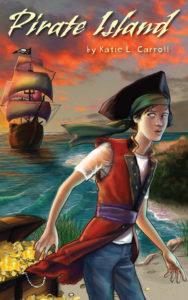 Coming on the heels of discussing the real history and legends that inspired my middle grade adventure PIRATE ISLAND (see my post “The Real Pirate Lore That Inspired PIRATE ISLAND”) and while I’m currently deep in research mode for my next middle grade novel, I’ve been thinking a lot about how to weave real history into novels. And how to do this for children’s books in particular.
Coming on the heels of discussing the real history and legends that inspired my middle grade adventure PIRATE ISLAND (see my post “The Real Pirate Lore That Inspired PIRATE ISLAND”) and while I’m currently deep in research mode for my next middle grade novel, I’ve been thinking a lot about how to weave real history into novels. And how to do this for children’s books in particular.
Much of the history I’ve researched both on famed pirate Captain William Kidd (for PIRATE ISLAND) and on witch trials in Connecticut in the 17th century (for my current WIP) deals with dark topics and violence. Both involve execution by hanging, murder charges, and other not-so-pleasant topics. I’m a firm believer that children’s writers should not shy away from writing darker stories, and that these stories are important, so long as the material is handled in a thoughtful way (see Newbery winner Kate DiCamillo’s essay in TIME “Why Children’s Books Should Be a Little Sad”).
The key is to keep it age appropriate, which is hard to do when kids anywhere from say 7 or 8 all the way up to 13 or 14 might be reading your book. That’s where subtlety comes in. You can include heavier themes and images in a subtle way where more mature readers will get them and less mature readers will simply gloss over them. I like to think of animated movies for a good example of this. So many drop in jokes that are for the adults but that children just won’t (even if they’re funny to the kids on the surface, they won’t get the innuendo behind it).
 Beyond making the material age appropriate, I think it’s important to make the history relevant. Whether that means making it fun (which isn’t necessarily the case of the history I’ve included) or by making it personal. Captain Kidd’s history is personal to Billy, the main character of PIRATE ISLAND, because Billy becomes obsessed with Kidd and models Kidd’s behavior to be brave. The history of the hidden treasure drives the plot of the story, but Billy’s emotional connection to Kidd drives the emotional story line.
Beyond making the material age appropriate, I think it’s important to make the history relevant. Whether that means making it fun (which isn’t necessarily the case of the history I’ve included) or by making it personal. Captain Kidd’s history is personal to Billy, the main character of PIRATE ISLAND, because Billy becomes obsessed with Kidd and models Kidd’s behavior to be brave. The history of the hidden treasure drives the plot of the story, but Billy’s emotional connection to Kidd drives the emotional story line.
I’ve only scratched the surface on this topic, but in the interest of keeping my blog posts short, I’ll leave you all on that thought for now. But there’s so much more material I have on weaving history into stories, I have to revisit this topic. Anything in particular you all would like me to discuss on the next post?


 I’ve been feeling particularly unproductive this year, in part because I haven’t been doing much drafting. It’s my favorite part of the writing process and the one that creatively feels the most fulfilling. I feel whole when I’m in the midst of a draft and able to lose myself in the process of adding words to the page.
I’ve been feeling particularly unproductive this year, in part because I haven’t been doing much drafting. It’s my favorite part of the writing process and the one that creatively feels the most fulfilling. I feel whole when I’m in the midst of a draft and able to lose myself in the process of adding words to the page.





















